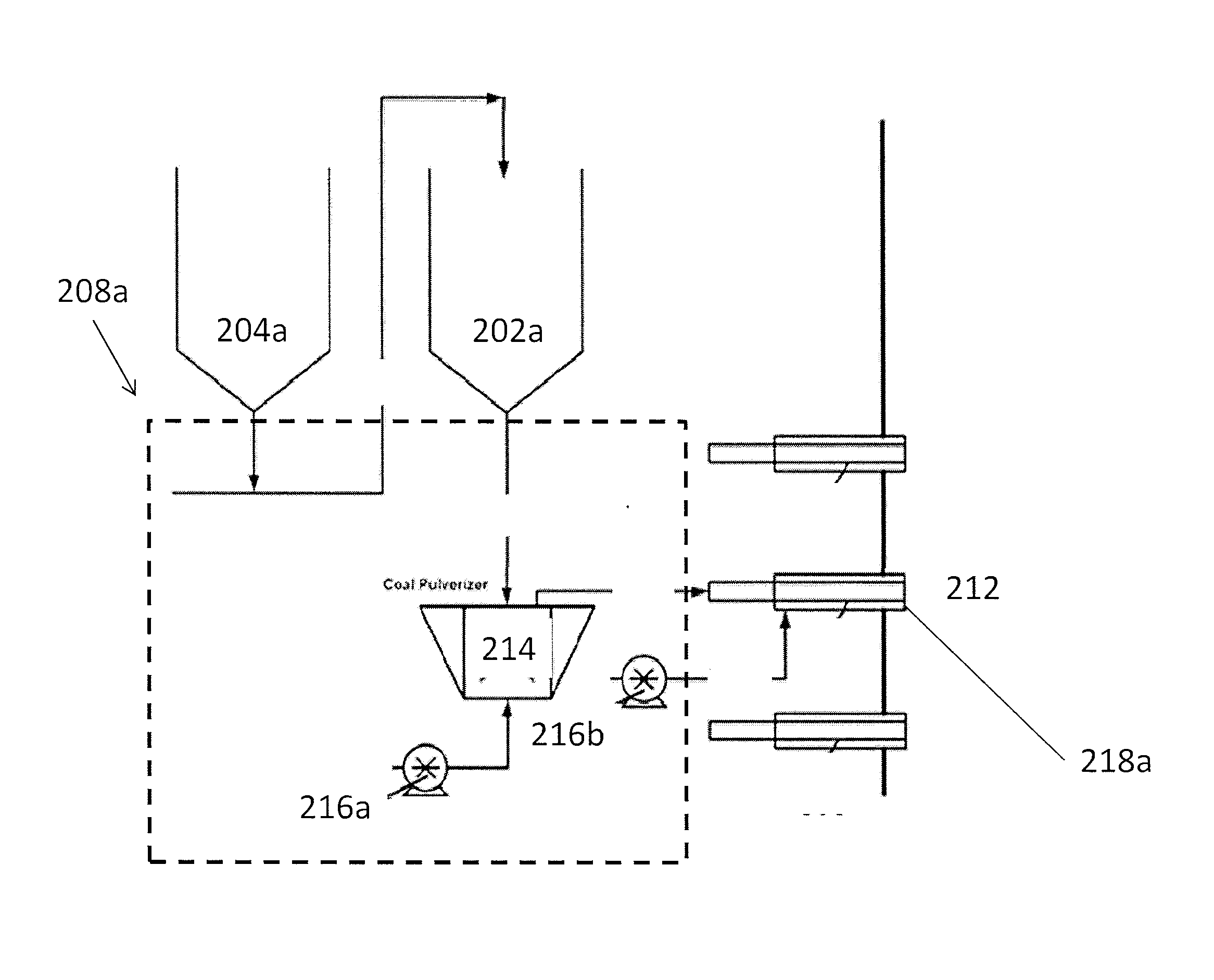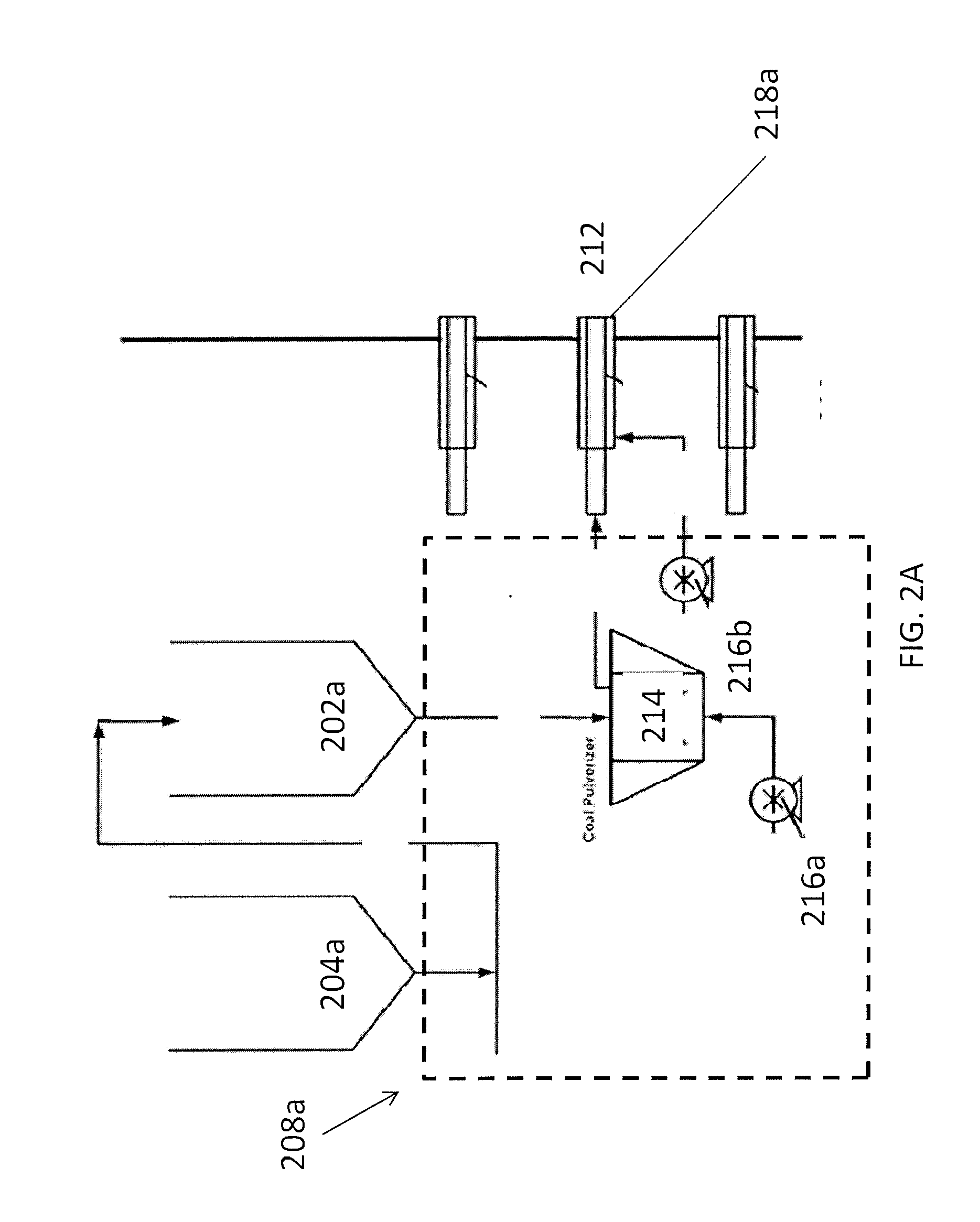Process for cogasifying and cofiring engineered fuel with coal
a technology of engineered fuel and cogasification, which is applied in the direction of solid fuel combustion, combustion types, lighting and heating apparatus, etc., can solve the problems of not being equipped with modern and advanced emission control technology, public health and environmental concerns, and the age of most us coal-fired power plants
- Summary
- Abstract
- Description
- Claims
- Application Information
AI Technical Summary
Benefits of technology
Problems solved by technology
Method used
Image
Examples
reference example 1
[0086]A computer process simulation is conducted using Aspen Plus V7.2 process simulation package. A coal having the characteristics listed in Table 1 (db: dry basis; ar: as received basis) is used. The engineered fuel can be formulated based on a typical waste residue composition in an advanced multi-material processing platform (MMPP) facility or traditional material recovery facility (MRF). The residue components are based on their weight composition with respect to paper, magazine, newsprint, cardboard, textile, plastics, woody biomass, yard trimmings and food scrap, etc. The engineered fuel is pelletized before chemical analysis. The analytical results are listed in Table 1 (column ‘EF’,). In all Examples below, the coal and EF feed rates are determined based on an assumed 400 MW power plant with an average heat rate of 9.478 MMBtu / MWh, with a total heat input rate of 7,582,400 MMBtu / hr. In all simulations, flue gas recycling technology is employed to control a constant flue ga...
example 1
[0087]This example establishes a baseline case in which 100% coal is combusted in a boiler. The coal feed rate is 296,475 lbs / hr. The simulation provided the following results (Table 2), with all concentration numbers corresponding to 7% O2 in the flue gas. Cl2 is given in ppb.
TABLE 2PollutantConcentration in Flue Gas, ppmEmission Rate, lbs / MMBtuNOx1580.205SO21,0372.850SO3540.186HCl490.077Cl21.23.51E−06
[0088]The simulation results demonstrate that:[0089]NOx emission potential level is high, and therefore requires NOx emission control technologies to be installed in the practical applications[0090]SO2 and HCl levels are significantly higher that the emission limits set up in the Clean Air Act1—(30 ppm for SO2 and 25 ppm for HCl, all corrected to 7% O2). Therefore, post combustion flue gas treatment, i.e. FGD, would be needed to meet such limits. Standards of Performance for Large Municipal Waste Combustors for Which Construction is Commenced After Sep. 20, 1994 or for Which Modificat...
example 2
[0094]In this example, coal is directly cofired with 5% engineered fuel (in heat basis) in a premixed manner. The coal feed rate is 281,651 lbs / hr and the engineered fuel feed rate is 23,771 lbs / hr. The engineered fuel contains sulfur and chlorine abatement sorbents with amounts calculated based on total sulfur and chlorine from both coal and the engineered fuel. As a result, the SO2, SO3, HCl and Cl2 concentrations in flue gas, or potential emission rates are reduced significantly compared to the above baseline case (Example 1), as shown in Table 3, with all concentration numbers corresponding to 7% O2 in flue gas, and Cl2 is given in ppb. With respect to NOx, there is only 2% reduction, likely because only 5% low fuel-nitrogen engineered fuel is cofired. Since Cl2 is substantially free, dioxins / furans formation will also be greatly reduced by cofiring the engineered fuel with coal.
[0095]Directly cofired engineered fuel containing about 5% of sorbents can substantially reduce the a...
PUM
 Login to View More
Login to View More Abstract
Description
Claims
Application Information
 Login to View More
Login to View More - R&D
- Intellectual Property
- Life Sciences
- Materials
- Tech Scout
- Unparalleled Data Quality
- Higher Quality Content
- 60% Fewer Hallucinations
Browse by: Latest US Patents, China's latest patents, Technical Efficacy Thesaurus, Application Domain, Technology Topic, Popular Technical Reports.
© 2025 PatSnap. All rights reserved.Legal|Privacy policy|Modern Slavery Act Transparency Statement|Sitemap|About US| Contact US: help@patsnap.com



